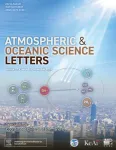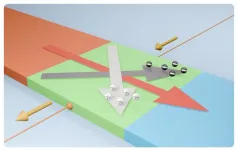(Press-News.org) The National Center for Supercomputing Applications and VAST Data are giving supercomputing system Delta and the newly launched DeltaAI a boost in their storage and application performance.
NCSA launched Harbor, a service that provides very fast storage for global home and software directories across all NCSA open-science resources. Its deployment has led to a 400% increase in application launch performance for the Delta system, among many other gains.
Over the last two years, we’ve seen a significant increase in GPU utilization from our Harbor users – and in that time, we’ve consolidated our file systems to a single VAST namespace, which has helped to ensure 100% uptime, improved application load times and provided a consistent, more interactive experience.
J.D. Maloney, NCSA Lead HPC Storage Engineer
To implement Harbor, Maloney and NCSA worked with VAST Data, which specializes in advanced artificial intelligence (AI) infrastructure. Harbor and the VAST Data Platform have improved performance and data efficiency, streamlined operations and boosted scalability for future growth.
“With VAST, NCSA and its users now have access to advanced AI infrastructure that can expedite scientific research across every discipline, supporting their ability to process complex datasets, train AI models, and conduct high-performance simulations across various scientific domains,” said VAST Data Global Systems Engineering Lead Subramanian Kartik. “We are proud to be helping these organizations leverage AI to explore new scientific theories and solve complex problems faster and more efficiently.”
As the AI era continues to gain momentum, Delta and DeltaAI are poised to keep NCSA a leader in the field of research computing. Delta is the most performant graphics processing unit (GPU)-computing resource in the U.S. National Science Foundation (NSF) portfolio, ideal for AI and machine learning applications with a focus on advancing accessibility for individuals with disabilities in high-performance computing. DeltaAI will quadruple NCSA’s AI-focused computing capacity and greatly expand the capacity available within the NSF-funded advanced computing ecosystem.
“DeltaAI will provide powerful capabilities for simulation and data science, with a strong emphasis on support for AI, which is in growing demand across many fields of science and engineering,” said NCSA Director Bill Gropp following the DeltaAI funding announcement.
about the impact of Harbor in this VAST Data announcement and case study.
ABOUT DELTA COMPLEX
NCSA’s Delta Complex includes Delta and DeltaAI. Both resources are part of the national cyberinfrastructure ecosystem through the U.S. National Science FoundationACCESS program. Delta (OAC 2005572) is a powerful computing and data analysis resource combining next-generation processor architectures and NVIDIA graphics processors with forward-looking user interfaces and file systems. The Delta project partners with the Science Gateways Community Institute to empower broad communities of researchers to easily access Delta and with the University of Illinois Division of Disability Resources & Educational Services and the School of Information Sciences to explore and reduce barriers to access. DeltaAI (OAC 2320345) maximizes the output of artificial intelligence and machine learning (AI/ML) research. Tripling NCSA’s AI-focused computing capacity and greatly expanding the capacity available within ACCESS, DeltaAI enables researchers to address the world’s most challenging problems by accelerating complex AI/ML and high-performance computing applications running terabytes of data. Additional funding for DeltaAI comes from the State of Illinois.
END
Harbor service, VAST Data provide boost for NCSA systems
2024-11-26
ELSE PRESS RELEASES FROM THIS DATE:
New prognostic model enhances survival prediction in liver failure
2024-11-26
Researchers have unveiled a groundbreaking advancement in liver failure care: the CATCH-LIFE-MELD score (Chinese Acute-on-Chronic Liver Failure Consortium (CATCH-LIFE)-MELD score). This innovative tool, developed by an international team led by Xia Yu and colleagues, enhances the accuracy of predicting short-term survival outcomes for patients suffering from acute-on-chronic liver failure (ACLF). The study, published in eGastroenterology, promises to revolutionize patient management and treatment planning for this life-threatening condition.
“ACLF presents unique challenges due to its rapid progression and high mortality rates,” said Dr. Yu Shi, senior researcher at Zhejiang University ...
China focuses on improving air quality via the coordinated control of fine particles and ozone
2024-11-26
A recent special issue of the journal Atmospheric and Oceanic Science Letters has brought together some of China's top scientists to provide a picture of the latest progress in understanding and controlling air pollution.
Fine particulate matter, referred to as PM2.5, and ground-level ozone (O3) are the main pollutants degrading the air quality of China’s cities and wider urban regions. Both have serious human health effects, such as heart disease, asthma, and lung damage.
The World Health Organization (WHO) provides clear guidelines regarding acceptable concentrations ...
Machine learning reveals behaviors linked with early Alzheimer’s, points to new treatments
2024-11-26
SAN FRANCISCO—November 26, 2024—Subtle signs of Alzheimer’s disease can emerge decades before a diagnosis—often in the form of irregular behaviors that reflect very early stages of brain dysfunction.
But until now, identifying and measuring these slight behavioral changes in a scientific way hasn’t been feasible, not even when studying Alzheimer’s in mice.
In a study published in Cell Reports, a team of scientists at Gladstone Institutes used a new video-based machine learning tool to pinpoint ...
Novel gene therapy trial for sickle cell disease launches
2024-11-26
UCSF Benioff Children's Hospital Oakland is enrolling patients in an innovative clinical trial that seeks to cure sickle cell disease. The trial is the first in the U.S. to apply non-viral CRISPR-Cas9 gene-editing technology in humans to directly correct the genetic mutation that causes the disease.
The research involves taking the patient’s blood stem cells to correct the mutation and returning those edited cells to the patient through a bone marrow transplant. It’s hoped the corrected blood stem cells will then multiply and create a new blood system, one free of sickle cell.
“This ...
Engineering hypoallergenic cats
2024-11-26
Gene editing could create hypoallergenic cats, according to a sequence analysis of the protein that triggers allergies to cats. Some 15% of people are allergic to cats, and symptoms can be severe. Martin D. Chapman and colleagues investigated CH1 and CH2, genes that code for the allergen, Fel d 1. Cats produce Fel d 1 in their sebaceous, salivary, perianal, and lachrymal glands. The function of Fel d 1 is unknown but comparisons of Fel d 1 sequences and homologs from 276 domestic or exotic cats—including cougars, cheetahs, lions, tigers, and jaguars, among others—suggests that CH1 and CH2 have been under active selection, and ...
Microwave-induced pyrolysis: A promising solution for recycling electric cables
2024-11-26
The demand for electronics has led to a significant increase in e-waste. In 2022, approximately 62 million tons of e-waste were generated, marking an 82% increase from 2010. Projections indicate that this figure could rise to 82 million tons by 2030. E-waste contains valuable materials such as metals, semiconductors, and rare elements that can be reused. However, in 2022, only 22.3% of e-waste was properly collected and recycled, while the remaining materials, estimated to be worth almost $62 billion, were discarded in landfills. Although efforts to improve e-waste recycling continue, the process remains labor-intensive, and a significant portion of e-waste ...
Cooling with light: Exploring optical cooling in semiconductor quantum dots
2024-11-26
Cooling systems are an integral part of many modern technologies, as heat tends to wear down materials and decrease performance in several ways. In many cases, however, cooling can be an inconvenient and energy-intensive process. Accordingly, scientists have been seeking innovative and efficient methods to cool substances down.
Solid-state optical cooling is a prominent example that leverages a very unique phenomenon called anti-Stokes (AS) emission. Usually, when materials absorb photons from incoming light, their electrons transition into an “excited” state. Under ideal conditions, as electrons return to their original ...
Breakthrough in clean energy: Scientists pioneer novel heat-to-electricity conversion
2024-11-26
Thermoelectric materials, which convert heat into electricity, are valuable tools for capturing waste heat and turning it into usable electricity. These materials are especially useful in industries and vehicles where engines produce a lot of waste heat, improving energy efficiency by converting it into additional power. They also exhibit potential for portable power generation, in remote sensors and satellites where traditional power sources may be impractical.
Traditional thermoelectric devices, known as parallel thermoelectric devices, generate a voltage in the same direction as the heat ...
Study finds opposing effects of short-term and continuous noise on western bluebird parental care
2024-11-26
Recent research led by Kerstin Ozkan and published in PeerJ Life and Environment has uncovered the complex and contrasting effects of human-generated noise on Western Bluebird (Sialia mexicana) parental behavior, raising critical questions about how anthropogenic noise affects wildlife in both urban and non-urban settings. The study, titled “Divergent effects of short-term and continuous anthropogenic noise exposure on Western Bluebird parental care behavior,” explores how different types of noise exposure alter the bird's ...
Quantifying disease impact and overcoming practical treatment barriers for primary progressive aphasia
2024-11-26
Imagine gradually losing the ability to express yourself — not because you've forgotten the words, but because they simply won't come out. This is the reality for individuals living with primary progressive aphasia (PPA), a rare form of dementia that usually begins in middle age and increasingly impairs language abilities over time.
Researchers at the University of Chicago Medicine are working to illuminate the struggles of those living with this condition and pioneer accessible treatment models. They recently published new studies that measure PPA’s significant impact ...





